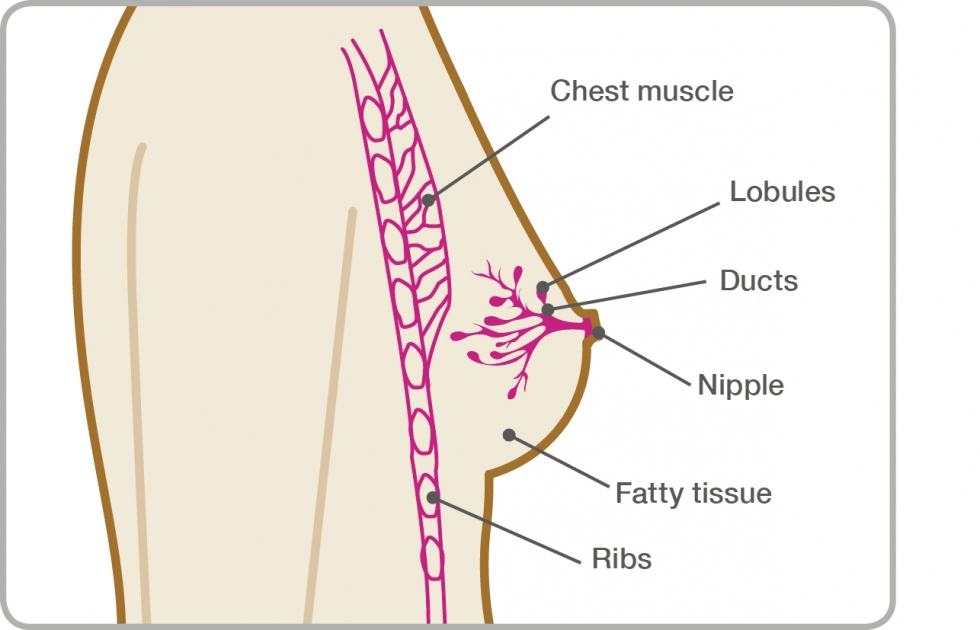Do Breast Fibroids Start Hurting Again Later in Life
1. What is a fibroadenoma?
2. Symptoms of fibroadenoma
3. Types of fibroadenoma
4. Causes of fibroadenoma
5. Diagnosis
6. Treatment and follow-up
7. Staying breast aware
1. What is a fibroadenoma?
A fibroadenoma is a very common benign (not cancer) breast condition.
Fibroadenomas often develop during puberty so are mostly found in young women, but they can occur in women of any age. Men can also get fibroadenomas, but this is very rare.
2. Symptoms of fibroadenoma
A fibroadenoma is usually felt as a lump in the breast which is smooth to the touch and moves easily under the skin.
Fibroadenomas are usually painless, but sometimes they may feel tender or even painful, particularly just before a period.
3. Types of fibroadenoma
Simple fibroadenoma
Most fibroadenomas are about 1–3cm in size and are called simple fibroadenomas. When looked at under a microscope, simple fibroadenomas will look the same all over.
Simple fibroadenomas do not increase the risk of developing breast cancer in the future.
Complex fibroadenoma
Some fibroadenomas are called complex fibroadenomas. When these are looked at under a microscope, some of the cells have different features.
Having a complex fibroadenoma can very slightly increase the risk of developing breast cancer in the future.
Giant or juvenile fibroadenoma
Occasionally, a fibroadenoma can grow to more than 5cm and may be called a giant fibroadenoma. Those found in teenage girls may be called juvenile fibroadenomas.
4. Causes of fibroadenoma
It's not known what causes a fibroadenoma. It's thought that it probably occurs because of increased sensitivity to the hormone oestrogen.
Breasts are made up of lobules (milk-producing glands) and ducts (tubes that carry milk to the nipple). These are surrounded by glandular, fibrous and fatty tissue. This tissue gives breasts their size and shape.
Fibroadenomas develop from a lobule. The glandular tissue and ducts grow over the lobule and form a solid lump.

5. Diagnosis
If you find a breast lump, see your GP. They're likely to refer you to a breast clinic where you'll be seen by specialist doctors or nurses.
At the breast clinic you'll have a range of tests. These may include:
- A mammogram (breast x-ray)
- An ultrasound scan (using sound waves to produce an image)
- A core biopsy (using a hollow needle to take a sample of breast tissue to be looked at under a microscope)
- A fine needle aspiration (FNA) (using a fine needle and syringe to take a sample of cells to be looked at under a microscope)
Fibroadenomas are often easier to identify in younger women. If you're in your early 20s or younger, your fibroadenoma may be diagnosed with a breast examination and ultrasound only. However, if there's any uncertainty about the diagnosis, a core biopsy or FNA will be done.
If you're under 40, you're more likely to have an ultrasound than a mammogram. Younger women's breast tissue can be dense which can make the x-ray image less clear so normal changes or benign breast conditions can be harder to identify. However, for some women under 40, mammograms may still be needed to complete the assessment.
You can call our free Helpline on 0808 800 6000 if you'd like more information about any tests you may be having.
6. Treatment and follow-up
In most cases you'll not need any treatment or follow-up if you have a fibroadenoma. Usually you'll only be asked to go back to your GP or the breast clinic if it gets bigger or you notice a change.
Most fibroadenomas stay the same size. Some get smaller and some eventually disappear over time. A small number of fibroadenomas get bigger, particularly those in teenage girls. Fibroadenomas can also get bigger during pregnancy and breastfeeding or while taking hormone replacement therapy (HRT), but usually reduce in size again afterwards.
Surgery
Sometimes an operation, called an excision biopsy, is needed to remove a fibroadenoma if it's a large, complex or juvenile fibroadenoma. You can also ask to have a fibroadenoma removed. This is usually performed under general anaesthetic.
Your surgeon may use dissolvable stitches placed under the skin which will not need to be removed. However, if a non-dissolvable stitch is used, they'll need to be taken out about a week after surgery. You'll be given information about looking after the wound before you leave hospital.
Vacuum assisted (VAC/VAB) excision biopsy
You may be offered a vacuum assisted excision biopsy to remove the fibroadenoma. This is a way of removing small fibroadenomas under local anaesthetic, without having an operation under general anaesthetic.
After an injection of local anaesthetic, a small cut is made in the skin. A hollow probe connected to a vacuum device is placed through this. Using an ultrasound as a guide, the fibroadenoma is sucked through the probe by the vacuum into a collecting chamber. The biopsy device is used in this way until all of the fibroadenoma has been removed. This may mean that surgery can be avoided.
The removed tissue is sent to a laboratory and examined under a microscope.
This procedure can cause some bruising and pain for a few days afterwards. Removing a fibroadenoma does not usually affect the shape of the breast, but there may be a slight dent in the breast where it has been removed.
7. Staying breast aware
For most women, having a fibroadenoma does not increase the risk of developing breast cancer.
If you were diagnosed with a complex fibroadenoma, you may be worried that your risk is very slightly increased. However, this does not necessarily mean you'll develop breast cancer in the future.
It's important to continue to be breast aware and go back to your GP if you notice any changes in your breasts, regardless of how soon these occur after your diagnosis of a fibroadenoma.
Your feedback
Source: https://breastcancernow.org/information-support/have-i-got-breast-cancer/benign-breast-conditions/fibroadenoma
0 Response to "Do Breast Fibroids Start Hurting Again Later in Life"
Postar um comentário